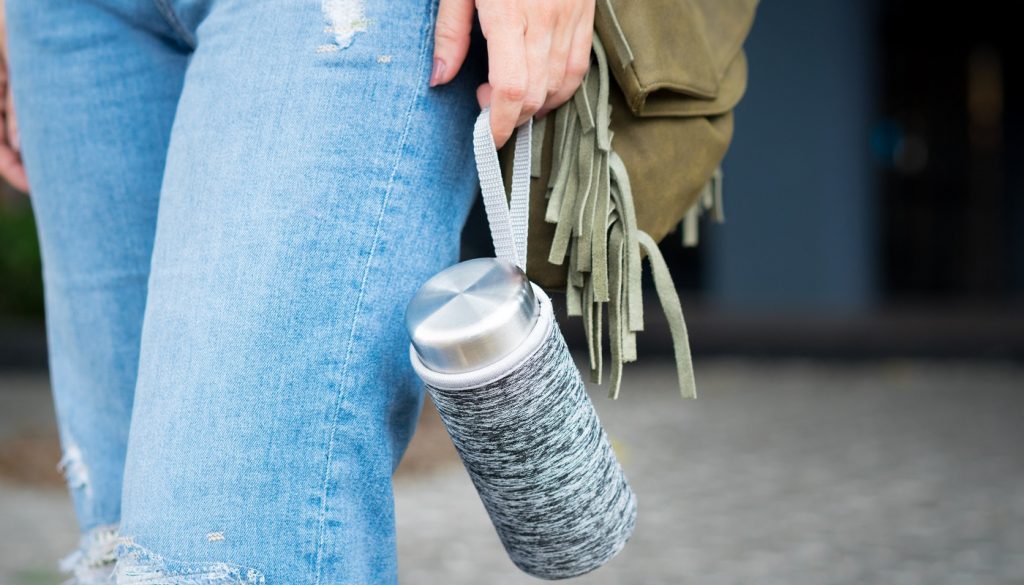Many Americans could do with shopping less. Consumerism is destroying our environment, and our ability to save for important things like home down payments and retirement plan investments.
Why shop less?
There are many reasons why you may be considering cutting back your spending. Overconsumption can create financial trouble, leading you into debt and preventing you from saving. There is an overproduction of manufactured goods, and buying these items increases your carbon footprint. You may even find that you struggle emotionally because of your overspending. Cutting just a portion of your spending can provide a myriad of benefits.

Financial woes
Anyone who has known the crushing weight of debt has thought about how to shop less. Average consumer debt in the United States rose to all-time highs in 2020, with most people carrying over $5,000 on their credit card, and over $16,000 in personal loans.
Even if you have been able to avoid debt, you can probably think back to a few purchases that you regret making. That cash could have gone towards a longer term goal.
Environmental impact
Excess shopping doesn’t just hurt your wallet – it can also have a lasting impact on the environment. There’s growing evidence to suggest that consumption of new goods produces more carbon emissions than any other activity. As you consider how to shop less, keep in mind that you’ll be reducing your drain on the planet’s resources.
How to shop less
So you’re ready to start shopping less! That’s great news. Your wallet and the environment will thank you. But where should you start?
Changing habits, especially ones developed over decades, can be difficult. But with the right guidance, you can begin making small changes that will help get your spending in check.
1. Find out what kind of spender you are
First step: Determine what kind of spender you are. Are you an emotional buyer, whipping out your debit card when you’re sad or frustrated? Do you purchase on impulse? Or do tend to drop large amounts of cash when you’re bored?
Understanding your triggers will go a long way to helping you with how to shop less. Keep a journal of your expenditures, and jot down some notes about how you’re feeling in the moment. This mental awareness will help you pause before you make a large, and possibly unnecessary, purchase.
2. Make a budget
If you’re looking for ways on how to shop less, a budget will be key to help you rein in your spending. This will give you the reality check on how much money you really have after all of your bills are paid. A budget doesn’t have to be fancy. There are plenty of free templates that you can either print or use in excel.
3. Save first, spend later
When you make your budget, don’t forget to allocate to your savings! Most financial experts agree that you should contribute between 10-20% of your income to a savings fund.
4. Set long term goals
Financial goals are so important when you’re looking for suggestions on how to shop less. Set yourself some realistic, attainable goals that you can work towards now that you aren’t spending all of your disposable income. Maybe now you can save for the car you want, or get enough together for a down payment.
5. Make lists before you shop
Figuring out how to shop less does not mean that you need to cut out shopping all together. But, you should actively decide in advance what you are going to purchase before you hit the store.
Make a list of what you want, thinking about whether you really need the items. It helps to do this a few days in advance. By the time shopping day rolls around, you’ll be focused on the items you need, and can ditch the ones you don’t.
6. Buy used
If there’s something in your budget that you can’t avoid purchasing, check with your local thrift store first before heading to the mall. Buying used is one of the best ways to determine how to shop less, and it can save you hundreds per year. You’ll also cut down on your carbon footprint by not contributing to further production, and keeping items out of landfill.
7. Take inventory
Before you rush out to purchase something new, take the time to look around your home. What you find might surprise you! Recovering impulse and emotional shoppers often have developed a cache of new items that lay forgotten in closets and drawers. Take an inventory of what you have before you purchase anything else. You may come across some things that you forgot you even bought.
8. Try the 30 day rule
This tip works very well for impulse shoppers in particular. When you decide that you want a big ticket item – and have worked it into your budget! – write it on a piece of paper and stick it to your fridge. If the item remains on your list for 30 days, and it’s still within your budget, give yourself permission to purchase the item. You may find that you no longer need or want the item, or something more important has taken its place.
9. Get inspired
Figuring out how to shop less can be hard, especially in the first few months. Write yourself a few inspirational notes, and leave them on your mirror, by the fridge, or at your front door. Words of encouragement, and reminders on why you are shopping less, will go a long way to curbing your spending and keeping you motivated for the long term.
10. Take away temptation
Some people find that if they have money, it burns a hole in their pocket until they spend it. If you’re one of those people, you may find that divvying up your money at the beginning of the month is the strategy for you. Put your cash into marked envelopes on payday, or have separate electronic savings accounts with your bank. That way you know exactly how much you have to spend, and don’t accidentally dip into your savings.
11. Be a savvy shopper
When you’ve decided on an item, shop around before you buy. Read product reviews, and do some sleuthing to see if it ever goes on sale. This step will help you think about whether you really want the item, and ensure that when you do purchase, you’re getting the best possible price.
12. Reuse and upcycle
Before you purchase an item new, think about whether something you already own can be reused or upcycled. If you’re tired of how your old oak bedroom set looks, a fresh coat of paint can go a long way to modernizing at a fraction of the price of a new set. Ask friends and family if they’re looking to part with anything, or take a look through Facebook marketplace. You may snag what you need at a bargain price, plus you won’t be contributing to manufacturing waste.
13. Don’t succumb to scare tactics
How many times have you been on a website that has a countdown clock at the top of the page? Or received an email for a one-day-only sale that’s almost too good to be true?
The red, bold lettering warning you to BUY NOW is a scare tactic used by online marketers. They feed into your fear of missing a sale that just happens to apply to the item you were searching for. If you find that this kind of tactic works on you, close your browser and come back to the item in a few days. You may find that the item has become even cheaper.
14. Be accountable
Did you know that updating a friend on your progress makes you more likely to achieve your goals? If you’re determined to find ways on how to shop less, find a buddy who doesn’t mind checking in with you weekly on how you’re doing. This will keep your goals top of mind, and help hold you accountable.
15. Stop rewarding yourself with shopping
Think about the last time you set a goal for yourself. Did your “reward” include purchasing a new item? If you’re looking for how to shop less, you may need to revaluate treating shopping as a treat. Instead of making a purchase, try giving yourself an at-home spa day.
16. Shop less frequently
When considering how to shop less, you may find that shopping less frequently helps to cut down your overall spending. Think about it. If you’re only allowing yourself to shop once every two weeks, you’ll cut out any unnecessary expenditure. You’ll also save yourself the gas that it would take to drive back and forth to the store.
17. Know it’s OK to fail sometimes
This is the most important tip if you’re learning how to shop less. Give yourself permission to fail. Breaking an overspending habit doesn’t happen overnight. You will have tough days, your budget will need to be adjusted, and you’ll make mistakes. As long as you learn from these experiences, and actively work at getting better, you will succeed at finding ways to shop less.






